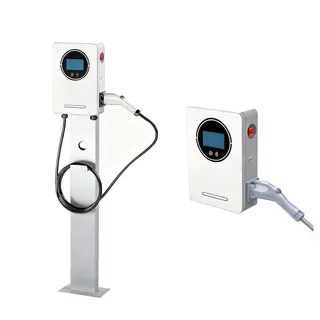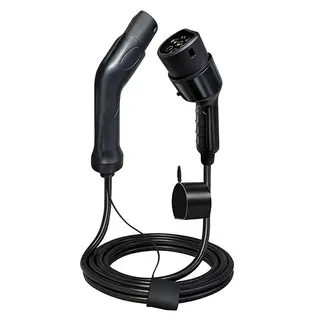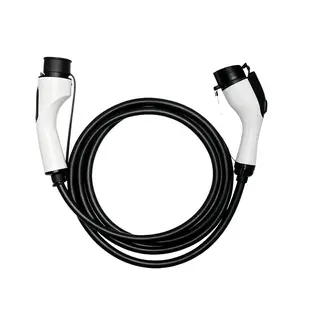With the popularization of electric vehicles, more and more consumers are paying attention to their charging power and charging speed. After all, who doesn't want to have their car "fully revived" in a short time? However, the charging power of an electric vehicle is not fixed; it is affected by multiple factors. This article will explore these factors in depth and provide some strategies to optimize ev charging power, helping car owners better manage the charging process and enhance their driving experience.
Before exploring the many factors that affect the charging power of electric vehicles, we first need to understand a basic and key concept: the relationship between charging power and battery capacity. This relationship not only determines the charging speed of the vehicle but also directly affects the convenience of daily use.
Under the same battery cell, the larger the battery capacity, the higher the maximum charging power that the vehicle can usually support. For example, the Tesla 100D has a larger battery capacity than the 90D and 85D, so its supported charging power is also higher. Similarly, the long-range version of the Model 3 has a higher charging power than the standard-range version. This is because the larger the battery capacity, the greater the charging power it can theoretically withstand, but the time to fully charge remains basically the same. This is like charging two batteries at the same time, although the power is doubled, the total time remains unchanged (provided that the charger's output power is sufficient).
There is no comparability between different battery cells because cell formulations are constantly being improved. For example, the 21700 battery cell used in the Model 3 has a much higher power than the 18650 cell in the Model S. In addition, some power-type cells, although smaller in capacity, have a very high charge and discharge rate and can withstand high-power charging. Therefore, when comparing the charging power of different models, it is not enough to look only at the battery capacity; one must also consider the type and formulation of the battery cell.
As an energy supply station for electric vehicles, the power of a EV Charger directly determines the speed of charging. However, the power of the EV Charger is not the only determining factor; the vehicle's own charging capability also plays a crucial role. The degree of matching between the two directly affects the actual charging efficiency.
At present, the mainstream public chargers have a power of 60 kW, while most newly built chargers have a power of 120 kW or even higher. However, the actual output power of these chargers may not reach the theoretical value. The reason is that the design voltage of the EV Charger is usually 500 V, while the requested voltage of most electric vehicles is 400 V. Therefore, the actual output power will be reduced to about 80% of the rated value, that is, a 60 kW EV Charger can output a maximum of 45 kW, and a 120 kW EV Charger can output a maximum of 90 kW. In addition, some chargers share power among adjacent stalls, so when another vehicle is charging nearby, your car may not be able to reach the maximum charging power.
The maximum charging power of different electric vehicles varies depending on design and the battery management system (BMS). Newer models usually support high-power DC fast charging, while older models may only support lower-power AC charging. For example, if the BMS of an electric vehicle is set to a maximum charging power of 60 kW, then under ideal conditions the vehicle can absorb up to 60 kW of power. If a 30 kW EV Charger is used, the charging speed will be limited by the output power of that charger.
The battery's state of charge not only determines the vehicle's range but also directly affects the efficiency and safety of the charging process. Understanding the relationship between battery charge level and charging power can help car owners better plan charging times and methods to optimize the charging experience.
Charging power is closely related to battery charge level. Lithium batteries cannot be charged at high power when they are near full charge, and fast-charging power decreases linearly as the charge level increases. Generally speaking, when the battery charge reaches 70%–80%, the charging power will drop significantly. The process from 80% to full charge will be very slow, and the time required to fill the last 20% of the charge may be similar to that required for the first 70%. Therefore, car owners should pay attention to the change in battery charge during charging and reasonably arrange the charging time.
Charging power is also closely related to battery temperature. Different formulations of battery cells have different temperature characteristics. Most lithium batteries can reach their best condition at 25–30°C, thereby achieving maximum charging power. However, the Model 3 battery cells need to be heated to 40–50°C to reach maximum charging power. Therefore, in winter, it is difficult for the vehicle to reach its theoretical maximum charging power. For safety reasons, car owners are advised to avoid high-power charging when the battery temperature is high and to let the battery cool down first.
The two main types of electric vehicle chargers are AC chargers and DC chargers. These two types differ significantly in power, charging speed, and applicable scenarios. Understanding their characteristics and scope of application helps car owners choose the most suitable charging method according to their needs.
AC EV chargers have lower power and are usually used in places such as homes or offices, also known as destination chargers. In North America, the power of AC EV chargers is typically between 3 kW and 19.2 kW, while in Europe it can reach up to 22 kW. For equipment with power exceeding 11 kW, a three-phase electrical connection is required, which has higher installation costs, and the local power grid may not support it. However, even a 7 kW EV Charger is sufficient to meet the needs of overnight home charging.
DC EV chargers are suitable for public fast charging, also known as mobile charging. DC EV chargers generally have higher power and can achieve rapid charging. However, due to the differences mentioned above between the EV Charger design voltage and the vehicle's requested voltage, as well as shared power among chargers, the actual charging power may not reach the theoretical value.
What factors affect the stability of EV charging power? The stability of charging power is directly related to charging efficiency and battery life. Therefore, understanding these factors and taking corresponding measures is crucial for optimizing the charging process.
Fluctuations in grid load and voltage are among the main factors affecting charging power stability. During peak electricity usage periods, grid voltage may drop, leading to unstable EV Charger output power. Therefore, car owners should try to avoid charging during peak periods to ensure charging stability.
Damage to electronic components inside the charger, such as transformers or control chips, or faults in circuit boards and unstable power supplies can all cause power fluctuations. Therefore, regularly inspecting the condition of the EV Charger and replacing damaged parts in time is essential for ensuring charging power stability.
The quality of charging cables also greatly affects power stability. Problems such as high resistance, poor contact, short circuits, damage, or loose plugs can affect power stability and output. Therefore, car owners should ensure that charging cables are of good quality and avoid using inferior charging cables and plugs.
Issues such as battery aging, capacity degradation, internal short circuits, or abnormal temperature can interfere with the charging process. Thus, it is very important to regularly check the battery condition and replace aged or damaged batteries promptly to ensure charging power stability.
Harsh environmental conditions such as high temperature and high humidity may interfere with the normal operation of chargers, reducing their power stability. Therefore, car owners should charge in suitable environments and avoid using chargers under extreme weather conditions.
System settings may also affect power stability. For example, an automatic current reduction setting after full charge may cause power fluctuations. Therefore, car owners should configure the charging system reasonably according to their needs to avoid unnecessary power fluctuations.
Whether for home use or public use, choosing the right EV Charger not only improves charging efficiency but also extends battery life and ensures charging safety. The following are key selection recommendations to help you make an informed choice.
When selecting a charger, car owners need to consider the vehicle's battery parameters and maximum charging power. For example, if the vehicle supports high-power DC fast charging, then choosing a 120 kW or higher-power DC EV Charger is more appropriate. If the vehicle only supports lower-power AC charging, then choosing a 7 kW or higher AC EV Charger will suffice.
Car owners should also choose based on their charging needs. If the vehicle often requires fast charging, a high-power DC EV Charger will be more convenient. If the vehicle is mainly charged at home or at the office, choosing an AC EV Charger suitable for household use will be more economical and practical.
Compatibility between the EV Charger and the vehicle is also very important. Different EVs have specific charging requirements and interfaces; if incompatible, it may result in unstable power or even charging failure. Therefore, car owners should ensure that the EV Charger matches the vehicle's interface and charging protocol.
The charging power of electric vehicles is a complex concept affected by multiple factors. Understanding these factors helps car owners choose the right EV Charger and ensure safe and efficient charging. Generally speaking, charging power is determined by both the vehicle's battery parameters and the charger's power level. Car owners can select suitable chargers based on their needs and vehicle specifications to achieve fast and stable charging. At the same time, regularly inspecting the condition of both the vehicle and the EV Charger and avoiding charging under extreme conditions can help extend battery life and improve charging efficiency.
In summary, the charging power of electric vehicles is an issue that requires comprehensive consideration of multiple factors. By reasonably choosing chargers and optimizing the charging process, car owners can enjoy a better driving experience and ensure the long-term performance of their vehicles.



